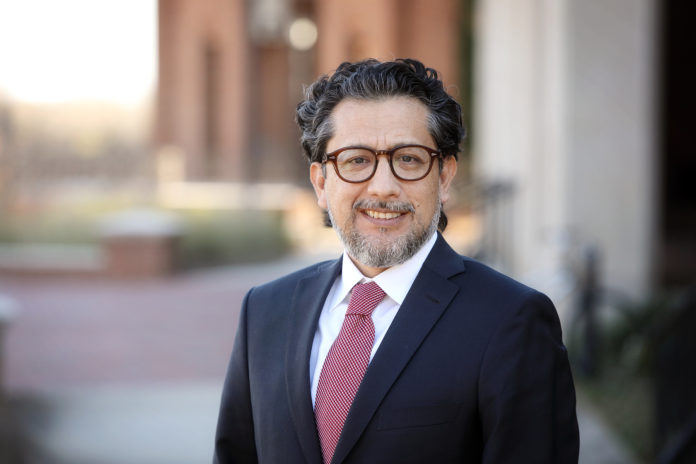Lawmakers are grappling with whether to increase the debt limit — commonly called the debt ceiling — after hitting the $31.4 trillion limit earlier this year.
There is no easy answer. If Congress fails to raise or suspend the debt ceiling, the government could run out of cash and default on its debt, pushing the country into a major recession. But increasing the limit will “once again send the signal that fiscal deficits don’t matter much if we can continue to accumulate debt,” said Dr. Antonio Saravia, associate professor of economics and director of the Center for the Study of Economics and Liberty at Mercer University.
“At some point, we need to make an expenditure adjustment,” he said. “We cannot continue to post deficits, and every time we hit the debt ceiling, just go and lift it. This is going to come and bite us at some point.”
Dr. Saravia recently talked to The Den and explained this complex topic.
What is the debt ceiling?
The debt ceiling is a limit on the total amount of allowable outstanding federal debt. Once that amount is reached, the government may not take on any additional debt.
The problem with this is that the U.S. government has run a budget deficit for decades, with its last surplus in 2001, Dr. Saravia said.
“If you have a deficit — meaning you’re spending more than you collect in tax revenue — then you’re going to have to borrow money to cover it. There’s no other way,” he said. “And so, when you hit that limit, you essentially have to freeze your expenditures; you will have to stop paying your bills, and the U.S. government will have to default.”
What does it mean to default?
A default occurs when a government fails to pay its national debt. This means the government is not paying the bills it needs to keep the country running. Federal employees and contractors will go unpaid, Dr. Saravia said.
This causes a ripple effect throughout the economy. For example, if the government doesn’t pay a contractor that’s building a highway, the company is going to stop working on the project, and it may be unable to pay its employees. If the company is public, its stock value will go down because the company’s revenue is going down, he said.
“That means that the stock market can go down, and that can spiral into a severe recession in the U.S. and abroad,” he said. “The U.S. stock market attracts a lot of investment from all over the world, so it could be really bad.”
Because of the potential repercussions, the U.S. has never defaulted and has avoided doing so by raising the debt ceiling. Congress has revised the debt limit 78 times since 1960.
Then why is there a debt ceiling?
The debt ceiling was created in 1917 as an attempt to control the amount of money the government can borrow.
“So, it was kind of a parameter to say, ‘Well, OK, if you hit this limit, then you need to freeze expenditures because you will be unable to pay your existing debt by borrowing more money,” Dr. Saravia said. “But now, because it has been lifted so many times, it is a non-credible threat.”
This has allowed the national debt to accumulate to about 130% of the United States’ gross domestic product, or GDP, the total value of goods and services produced in the country, he said.
“Even if we use all of the money we produce in a single year, all of us together, to pay our debt, we can still not pay it,” he said.
So, to whom does the government owe this debt?
The government owes most of its debt to anyone who holds U.S. treasury bills, which are government-issued bonds.
Mostly, these are other Americans. If you have a 401(k) or other investment account, you likely hold U.S. treasury bills as part of a diversified portfolio, Dr. Saravia said. They’re generally low interest but are considered a safe investment.
International investors may hold U.S. treasury bills as well. About a third of the nation’s public debt is owned by governments abroad, NPR reports.
Are there any other solutions?
The government could ask the Federal Reserve, the U.S. central banking system, to print more money, but that “is the last thing we want to do because it could have disastrous consequences,” Dr. Saravia said.
Injecting money into the economy, as was done during the pandemic, contributed to the inflation that the Fed is fighting now. This strategy has never been used in relation to the debt ceiling, Dr. Saravia said.
“It’s like choose your poison. Either you get into a recession because we go into default or you print money and generate inflation, and we just kick the can to the future,” he said. “The real solution here is to say, OK, enough is enough. We must stop spending, and we reduce mandatory spending … try to be lean and just stop posting deficits.”









